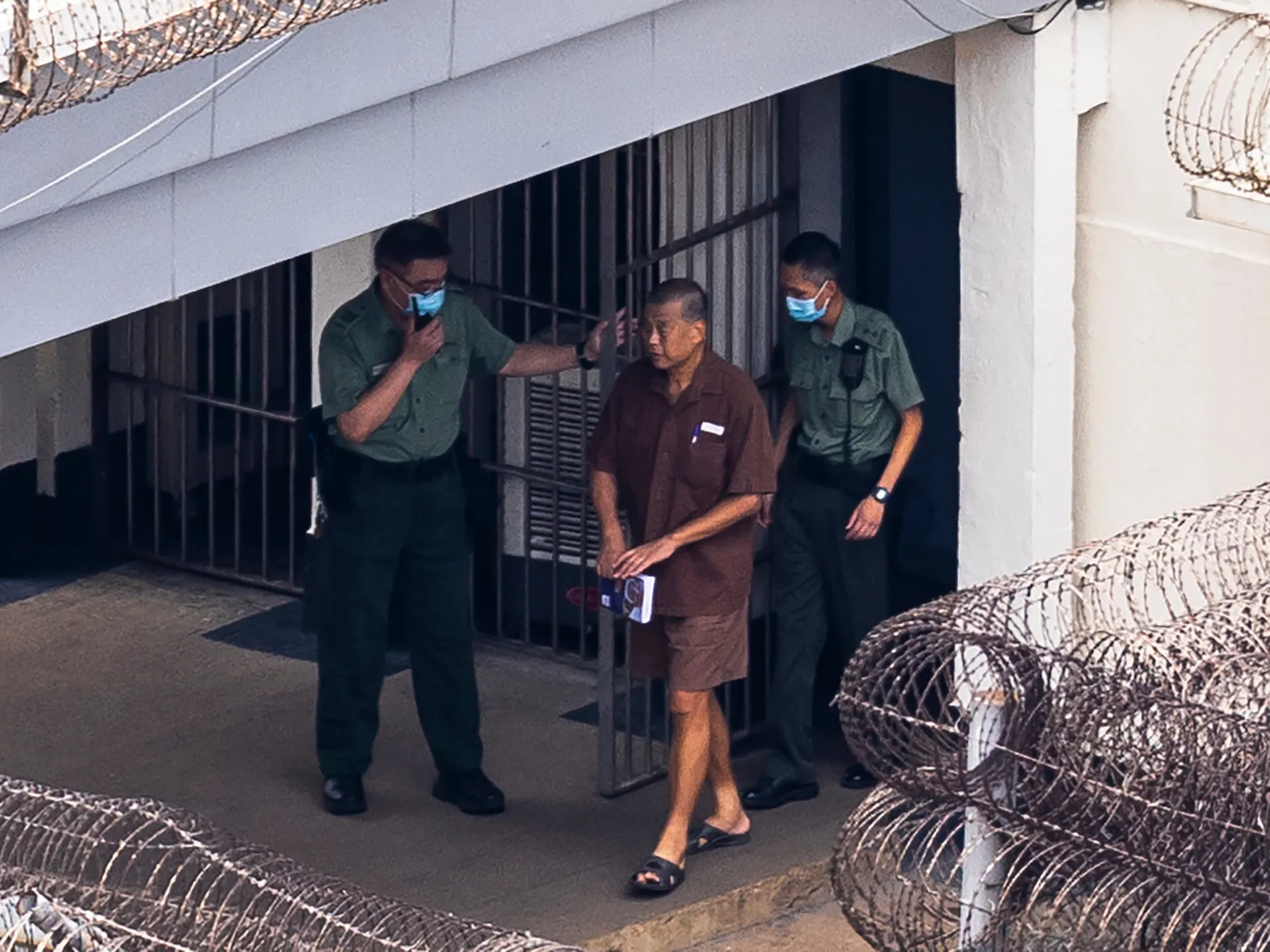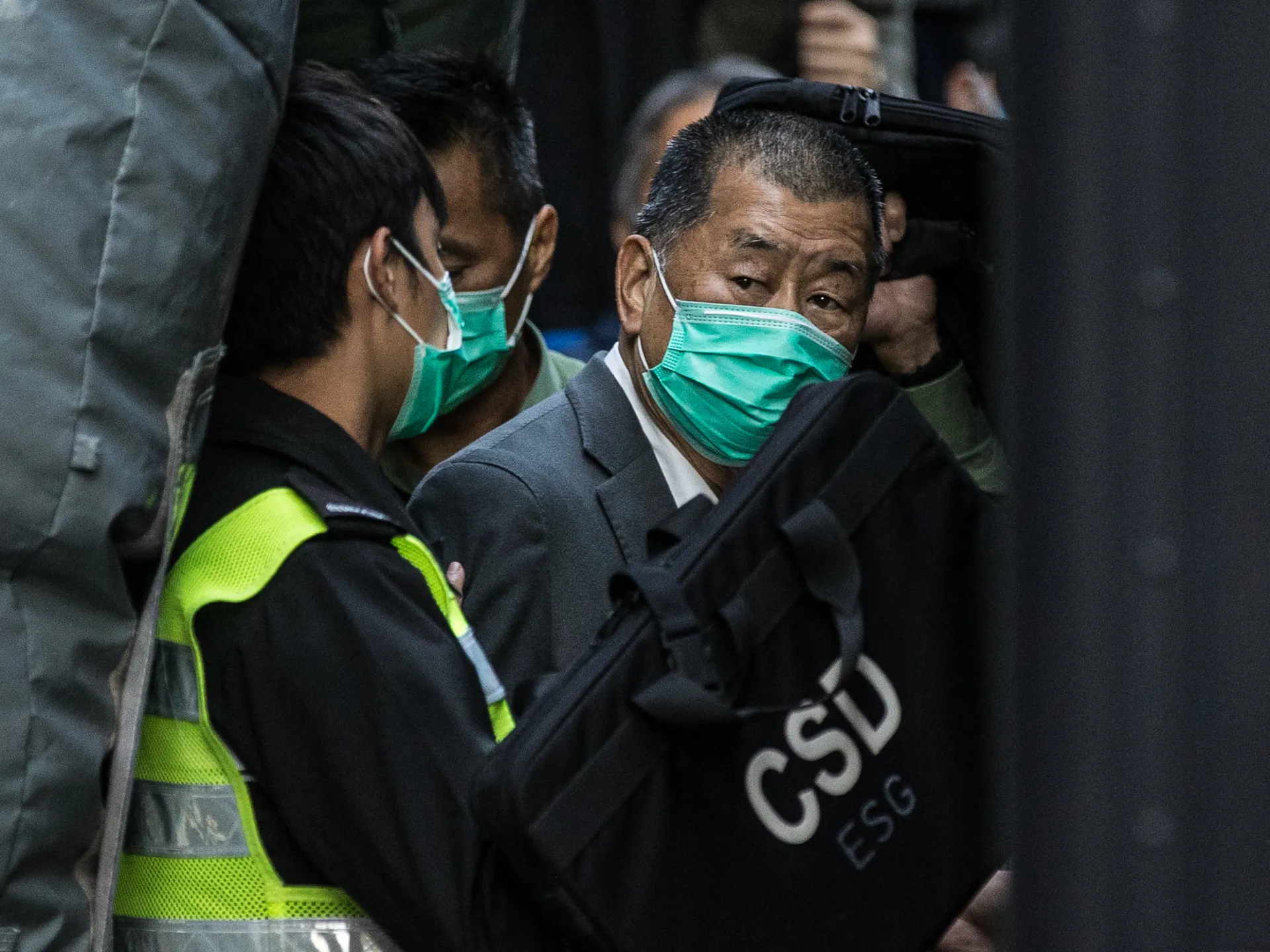The High Court of Hong Kong has convicted pro-democracy activist and newspaper founder Jimmy Lai on three charges related to accusations that he undermined China’s national security, as part of a widely scrutinised trial.
Lai now faces the possibility of a life sentence in prison.
Recommended Stories
list of 3 itemsend of list
On Monday morning, a panel of three judges found Lai, 78, guilty of two counts of conspiring with foreign forces to threaten national security and one count of conspiracy to publish seditious material.
Lai had pleaded not guilty to all the charges. He has been in detention since December 2020, when he was arrested in the midst of a series of antigovernment protests that gripped Hong Kong.
The case has been seen as a test of Hong Kong’s “one country, two systems” principle, which was established after the former British colony was returned to China in 1997.
The principle affirmed that Hong Kong was part of China, but in theory, it allowed the territory to retain its own governance and administrative structure, separate from Beijing.
But activists say that autonomy has been threatened in recent years, as China seeks to assert greater control over Hong Kong. The territory, once seen as a beacon of free speech in Southeast Asia, has seen its protesters, journalists and publishers targeted for arrest and prosecution in recent years.
On Monday, Judge Esther Toh accused Lai of making “constant invitations” to the United States to take action against the People’s Republic of China (PRC) and its ruling Communist Party.
She and her fellow judges, Alex Lee and Susana D’Almada Remedios, issued an 855-page verdict in the case, which described Lai as the “mastermind” of a criminal conspiracy.
“There is no doubt that the first defendant had harboured his resentment and hatred of the PRC for many of his adult years,” Toh told Monday’s packed courtroom.
Human rights groups and media advocacy organisations quickly slammed the verdict as a miscarriage of justice.
“We are outraged that Jimmy Lai, Hong Kong’s symbol of press freedom, has been found guilty on trumped-up national security charges,” Thibaut Bruttin, the general director of Reporters Without Borders, said in a statement.
“This unlawful conviction only demonstrates the alarming deterioration of media freedom in the territory,” he added.
“Make no mistake: it is not an individual who has been on trial – it is press freedom itself, and with this verdict, that has been shattered.”
Another free-speech organisation, the Committee to Protect Journalists (CPJ), also denounced Lai’s conviction, calling it an act of “persecution”.
“The ruling underscores Hong Kong’s utter contempt for press freedom, which is supposed to be protected under the city’s mini-constitution, the Basic Law,” Beh Lih Yi, the group’s Asia-Pacific director, said.
“Jimmy Lai’s only crime is running a newspaper and defending democracy.”
Lai is set to reappear in court on January 12 for a pre-sentencing hearing. It is not yet clear whether he will seek to appeal Monday’s verdict.
The trial against him stretched for 156 days. Lai himself testified for 52 days, arguing that he had not called on the US to impose sanctions or other economic penalties on China, as the prosecution alleged.
The charges he faced came under the 2020 Hong Kong National Security Law, a far-reaching piece of legislation enacted in the midst of the pro-democracy protests of 2019 and 2020.
The law imposed steep penalties for actions deemed to be “subversion” or “secession”, effectively criminalising Hong Kong’s pro-independence movement, as well as any criticisms of the Chinese Communist Party.
As an outspoken critic of the government in Beijing, Lai was quickly charged under the newly imposed law.
His publication, the Apple Daily, published its first edition in 1995, and it became known as Hong Kong’s largest pro-democracy newspaper.
During Lai’s trial, prosecutors presented 161 articles from the newspaper as evidence.
In August 2020, less than two months after the national security law came into effect, Lai was arrested for the first time, then released. He was arrested again in December, only to be released and re-arrested a third time. He has remained in custody ever since.
By May 2021, authorities had frozen Apple Daily’s assets. And in June of that year, five Apple Daily executives, including its editor-in-chief, were taken into custody amid a police raid on the newspaper’s headquarters.
The newspaper printed its final edition that month.
Lai’s defence team and family have repeatedly petitioned Hong Kong’s High Court for leniency, citing Lai’s age and health conditions, including diabetes and high blood pressure.
World leaders like US President Donald Trump have previously called for Lai’s release.





![Various of groups of pro-democracy activists including Jimmy Lai , center, arrives at a court in Hong Kong, Tuesday, Sept. 15, 2020. Prominent activists Jimmy Lai and Joshua Wong were among more than two dozen activists appearing in court after being charged of participating in unlawful assembly. They were charged for joining a vigil last June 4 to commemorate the anniversary of the 1989 Tiananmen crackdown. While the event has been held every year, authorities did not grant permission for the gathering this year citing concerns over the spread of coronavirus. [AP Photo/Kin Cheung]](https://i0.wp.com/occasionaldigest.com/wp-content/uploads/2025/12/AP20259260530041-1732140237.jpg?w=640&ssl=1)
